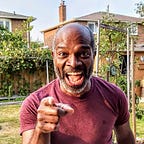I Want To Die Of Natural Causes
How About You?
My mom wasn’t doing well. She’d been struggling with various health concerns, relying on frequent doctor appointments, consultations with specialists, prescriptions and over-the-counter medications. A pattern she’d repeated for years.
When shortness of breath landed her in the hospital, they gave her antibiotics for pneumonia. She tested negative for covid. Once they stabilized her oxygen and got the edema in her legs more under control, she was monitored for a couple of days before being sent home.
Even before that emergency room visit, I thought she was taking too many meds. I find it alarming, particularly for seniors who can easily become pharmaceutical guinea pigs. Predictably, the hospital doctors tacked on three more pills. Her list of medications was now two pages long.
Prescription medication is the backbone of a healthcare model that almost always leads to another prescription for some new sign of illness (high blood pressure, for example) and then another pill (let’s say a diuretic) to handle additional symptoms, and then a follow-up appointment that yields yet another prescription (perhaps a steroid this time) to deal with systemic inflammation by suppressing immune function.
After years and years of medicated manipulation, at some point down the line, the human body can get overwhelmed, given that meds often fail to address the core underlying problems that signs and symptoms are signaling. Masking symptoms is not a solution. Not only can organ damage result from long-term pharmaceutical use, medications can make our bodies vulnerable to infection because they routinely compromise the immune system — both by accident (side effect) and by design (targeted effect).
If we peel back the covers and look, it’s a nightmare, really. And yet somehow, culturally, in North America, our healthcare system has managed to normalize the over-prescription of meds to where we may not even realize the crazy, no-exit ride of pills for ills that we’re on until things really start going sideways. Unfortunately, my mom had been on the medical merry-go-round for quite some time.
A Paradigm Shift Resurrected
Nearly 50 years ago, Dr. John W. Travis, aka Jack Travis, opened the Wellness Resource Center in Mill Valley, California, the first center in North America dedicated to wellness as a practice of whole person health. He also introduced the Illness-Wellness Continuum, a diagram that also identifies two distinct paradigms underlying human health and wellness: Treatment Paradigm and Wellness Paradigm.
The objective of the Treatment Paradigm is to bring people who aren’t feeling well to a neutral point where they are no longer experiencing signs or symptoms of illness or disease. Designed by pharmaceutical companies and cemented in place by government agencies lobbied into submission (captured) by the industrial health complex, healthcare in North America is less focused on successfully restoring health than on suppressing the expression of illness, primarily through the use of pharmaceutical drugs.
Being free of symptoms and showing no sign of illness — the mission of the Treatment Paradigm — is more of a tipping point than a measure of success for the Wellness Paradigm. And the first step toward high-level wellness on Jack Travis’ Illness-Wellness Continuum is Awareness.
Consider this: Would it be helpful to know that toxic overload is a major modern health threat and that medications contribute to our level of toxicity often while decreasing our ability to detoxify? For me, that’s helpful to know. I believe making the effort to intentionally expand awareness can provide insights that help us recognize why we can’t rely on the Treatment Paradigm if we want to find our path to wellness.
Prescription drugs force our bodies to use valuable resources to bind chemical toxins and remove them from the bloodstream in order to eliminate them from the body. What happens to this metabolic process if our gut health, detoxification pathways and/or vital organs are compromised?
We won’t be able to eliminate toxins efficiently, giving our bodies no choice but to store toxic waste in fat cells, organs and bone in order to keep it out of circulation. This bioaccumulation of toxins can result in any number of signs or symptoms of illness including anxiety, adrenal fatigue, brain fog, cardiovascular issues, diabetes, depression, digestive disorders, metabolic syndrome, osteoporosis, kidney and liver problems, all of which share the common threat of toxic overload.
I wish my mom had known about this stuff when she was my age. Maybe she would have adopted a healthier diet and led more of a longevity lifestyle. Making different choices earlier in life can pay enormous dividends. How would she be feeling had she begun daily walks a decade ago and hadn’t taken so many medications over the years?
None of us can turn back the clock, but there’s always room for discovery and growth moving forward, provided we’re paying attention.
Early in my 50s, I committed to taking charge of my own health. I’ll be 59 next month and I still don’t take meds. The ripple effect of illness and disease can create emotional health challenges for family members, particularly for primary caregivers. If I can help it, I don’t want to become a burden as I age. I want to die of natural causes. Just not anytime soon.
Life is a gift with only one guarantee, so instead I offer you this: Don’t wait for disability or some scary diagnosis or telltale signs of chronic illness to make a conscious shift to the Wellness Paradigm. No matter where you see yourself on the Illness-Wellness Continuum, what matters most is the direction you’re heading.
— DT
